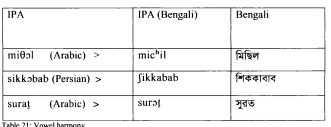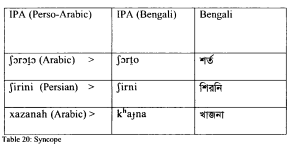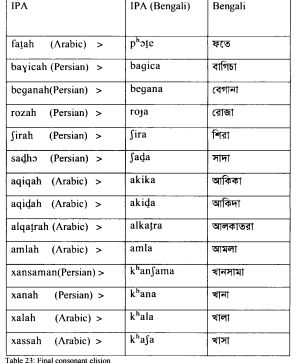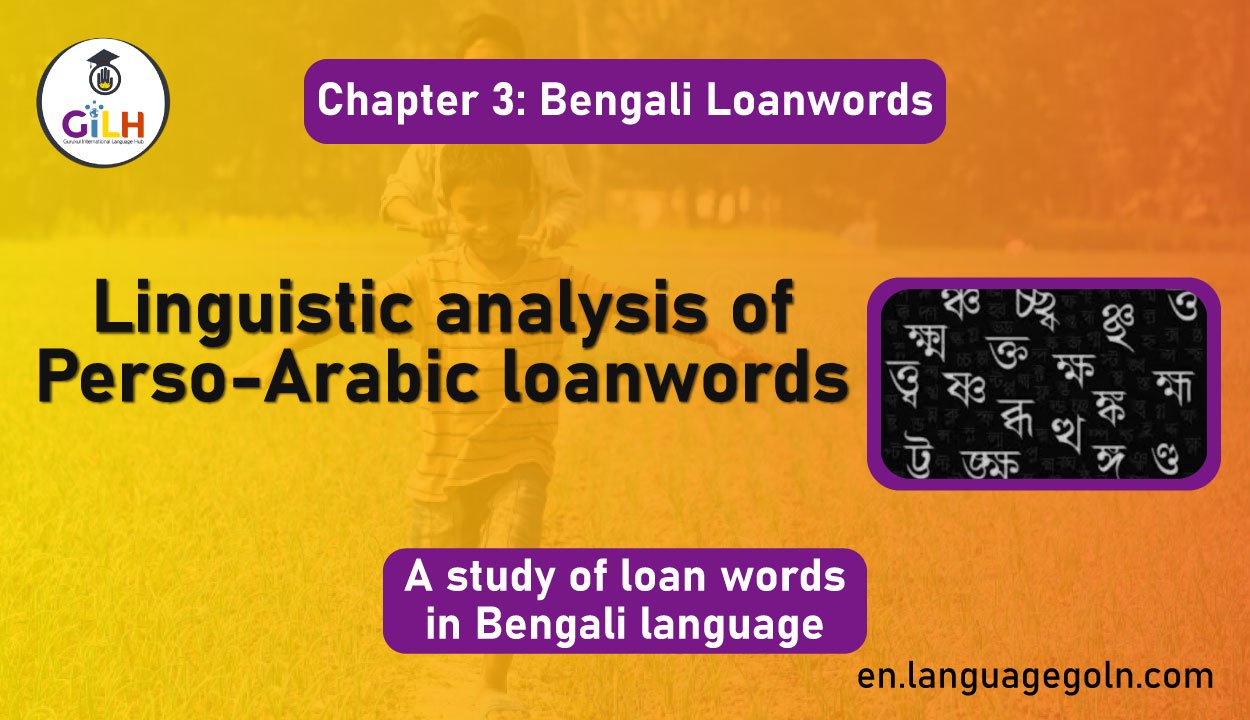Today our topic of discussion is – Linguistic analysis of Perso-Arabic loanwords
Linguistic analysis of Perso-Arabic loanwords
At this stage of study we will analyze the Perso-Arabic elements exist in Bengali language from linguistic point of view. This analysis will be based on the following aspects –
1. Phonological analysis
2. Morphological analysis
3. Semantic analysis
Phonological analysis of Perso-Arabic loanwords
Every language is unique because it has its own linguistic structure. The phonological structure of one language differs from the phonological structure of another language. That is why a language generally does not borrow sound or phonological elements from another language.
While borrowing, it does not borrow the elements along with the sound of the donor language. It only takes the word. After borrowing, the recipient language arranges the words in its own phonological structure and removes all those symbols which prove the words as foreign.
In this way the words become the internal property of the recipient language. In the history of more than one thousand years of Bengali language, not a single phoneme was borrowed from foreign origin’ (Azad, 1998: 121). This is not exceptional in the case of Perso-Arabic loanwords in Bengali.
‘Going through the normal philological process of changes in words taken as loan from a foreign language, Perso-Arabic words in Bengali lost more or less their own phonology to adopt themselves to the phonology of the language, they enriched’ (Ghulam Maqsud Hilali, 1967).
While borrowing, Bengali arranged the Persian loanwords in its own sound system. For doing so the language, of course, had to come through some certain sound change
processes. The processes of sound change between these two languages are the following
1. Assimilation
2. Anapticsis
3. Aphesis
4. Syncope
5. Vowel harmony
6. Nasalization
7. Final consonant elision
8. Middle consonant elision
9. Middle consonant insertion
10. Final consonant insertion
11. Final vowel insertion
Assimilation: We know when a sound is changed because of the influence of its neighbor sound and becomes similar, it is called assimilation. Between the languages of Perso-Arabic and Bengali, we see this process. For example,

Anapticsis: This is the sound change process where two connected consonants are separated because of the entrance of a vowel sound. We find this process in below example-

Aphesis: When the initial vowel sound of a word is deleted, it is called Aphesis. Between the languages of Perso-Arabic and Bengali, we see this process. For instance-

Syncope: Deletion of the vowel sound from the middle of a word is the process named
Syncope. This process is also found between Perso-Arabic and Bengali language. For instance-

Vowel harmony: Between the languages of Perso-Arabic and Bengali, we see this process of sound change. Here are the examples –

Nasalization: In this process a sound becomes nasal. This process is also found between
Perso-Arabic and Bengali language. For instance
Final consonant elision: In this process the final consonant of a word is deleted. We get a lot of examples of this process. Such as-

In the above analysis we see that there are some certain processes of sound change occurred between Perso-Arabic and Bengali words while taking them as loan. Those processes are Assimilation, Anapticsis, Aphesis, Syncope, Vowel harmony, Nasalization, Final consonant elision, Middle consonant elision, Middle consonant insertion, Final consonant insertion and Final vowel insertion.
In the domain of linguistics these kinds of changes in loanwords were fully active in Bengali in the beginning of its formative period
See more
